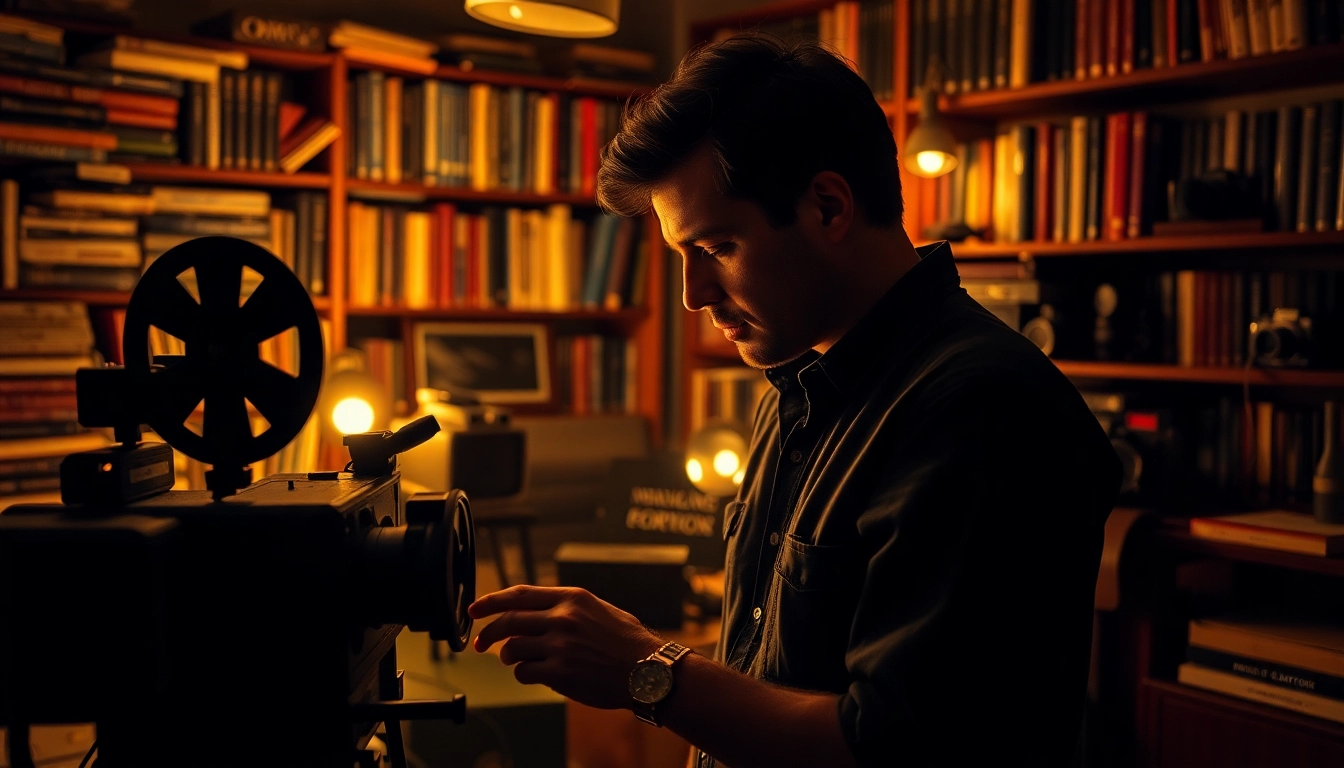Understanding Storytelling & Documentary
In the realm of filmmaking, Storytelling & Documentary form a profound relationship that transcends simple narration to create impactful visual experiences. Storytelling in documentary filmmaking is not just about presenting facts; it is about conveying emotions, truths, and human experiences through a structured narrative. The art of documentary storytelling encompasses various perspectives that allow audiences to engage with real-life events, which informs, inspires, and drives social change.
What is Documentary Storytelling?
Documentary storytelling refers to the technique employed by filmmakers to narrate real events through a creative lens. Unlike fictional films, documentaries aim to present factual content, but they manipulate elements of storytelling to enhance viewer connection. Documentary storytelling relies on authenticity and aims to shed light on varying aspects of life, society, and the environment. This form of storytelling can adopt various styles, from observational to participatory, allowing creators to craft engaging narratives that resonate with audiences.
The Importance of Narrative in Documentary
The narrative is fundamentally the backbone of any documentary. It plays a crucial role in how information is presented and interpreted by the audience. A strong narrative can help contextualize facts, guide viewer emotions, and ensure that the documentary resonates beyond its runtime. In documentary filmmaking, the narrative often weaves together personal stories, factual data, and creative visuals to create an immersive experience. The narrative forms the framework that shapes the audience’s understanding and emotional engagement with the material presented.
Key Elements of Documentary Films
Several key elements contribute to creating compelling documentaries. These include:
- Purpose: Documentaries should aim to inform, educate, or advocate for change. A clear purpose helps guide storytelling approaches.
- Research: In-depth research is vital in documenting facts accurately and providing context to the storyline.
- Structure: A coherent structure, often utilizing different storytelling formats like linear, circular, or thematic structures, enhances clarity and engagement.
- Visual Language: The selection of visuals, including shots, graphics, and illustrations, enhances the narrative and provides additional layers of meaning.
- Editing: Careful editing shapes the pacing and rhythm of the documentary, guiding viewers through the narrative effectively.
Fundamental Techniques in Storytelling & Documentary
Visual Storytelling Techniques
Visual storytelling in documentaries is a powerful tool for conveying messages without relying solely on words. Techniques such as contrast, color, shot composition, and framing all play significant roles in how a viewer interprets a scene. The use of B-roll footage can give context to the main narrative, providing a visceral understanding of the subject matter. Creative visual techniques like time-lapses, slow-motion, and drone shots can create dramatic effects that appeal to the viewer’s emotions.
Using Sound and Music in Documentaries
Sound design in documentaries enhances verbal storytelling and can evoke powerful emotional responses. The importance of sound goes beyond dialogues; ambient sounds can set the scene, while music specifically composed for the documentary can heighten tension, joy, or poignancy. Mixing diegetic sound (sound from within the film’s world) with non-diegetic sound (external music scores) creates an emotional landscape that engages viewers, guiding their reactions throughout the film.
Interview Techniques for Engaging Storytelling
Interviews are pivotal in documentary storytelling, as they allow personal testimonies to drive narratives. Effective interviewing techniques include establishing rapport with the interviewee, creating an open atmosphere for sharing personal stories, and asking open-ended questions that prompt detailed answers. The manner in which interviews are filmed—such as the use of close-ups to capture emotion—also impacts the viewer’s empathy and connection with the subject matter. Editing plays a crucial role in how interviews are presented, often weaving together multiple viewpoints to provide a comprehensive understanding of the topic.
Crafting Compelling Narratives in Storytelling & Documentary
Structuring Your Documentary: The Three-Act Structure
The three-act structure, a storytelling framework widely used in fiction, is also effective in documentary filmmaking. This structure comprises:
- Act One – Setup: Introduces the principal subject, context, and establishes the emotional tone.
- Act Two – Confrontation: This act complicates the narrative, presenting challenges and conflicts for the characters or subjects involved.
- Act Three – Resolution: The finale wraps up the narrative, offering closure or a call to action related to the documentary’s subject.
Using this structure allows filmmakers to unravel complex topics in a digestible and engaging manner, ensuring that audiences remain captivated throughout the viewing experience.
Developing Characters and Themes
Character development is also crucial in documentaries, as it builds viewer attachment and empathy. Filmmakers should focus on individuals who represent broader themes within the documentary. Themes such as resilience, community, or environmentalism can be woven through individual narratives, allowing audiences to engage deeply with both the personal and collective story. This layered storytelling approach invites viewers to reflect on their values and beliefs within the broader context of the documentary’s message.
Ethical Considerations in Storytelling
Ethics play a pivotal role in documentary filmmaking. Filmmakers are responsible for accurately representing their subjects and the truth behind the stories they wish to convey. Issues such as consent, representation, and sensitivity are paramount. Filmmakers must navigate the fine line between artistic interpretation and factual accuracy, ensuring they do not exploit subjects for sensationalism. Ethical storytelling fosters trust between the filmmaker and the audience, reinforcing the credibility of the documentary itself.
Post-Production Techniques for Storytelling & Documentary
Editing: Shaping the Final Product
Editing is where the documentary truly comes to life. It involves selecting the most compelling footage, organizing it to flow with the narrative, and applying cuts that enhance pacing. Editors shape how the audience experiences the story, influencing emotional highs and lows. Effective editing techniques, such as cross-cutting between different scenes, can create suspense or highlight connections between separate narratives, enhancing overall impact and insight.
Color Grading and Its Impact on Narrative
Color grading in documentary filmmaking can drastically alter the perception of the narrative. The choice of color palettes affects emotional resonance and can be reflective of the themes being portrayed. For instance, warm tones might invoke nostalgia, while cold tones could suggest detachment or bleakness. Consistent color grading throughout a documentary helps maintain visual harmony and reinforces the storytelling’s emotional undercurrents.
Sound Design: Enhancing Viewer Engagement
Sound design goes beyond dialogue and music; it is an integral part of storytelling that adds depth and dimension to the documentary. The design includes sound effects that emphasize actions, background ambiances that situate scenes, and strategic pauses that enhance emotional weight. The integration of sound design with visual elements creates an immersive viewing experience, capturing audience attention and allowing them to engage more fully with the narrative.
Future of Storytelling & Documentary in the Digital Age
Impact of Streaming Platforms on Documentary Filmmaking
The rise of streaming platforms has revolutionized the documentary landscape. These platforms provide unprecedented access to a vast audience, allowing documentaries to reach viewers globally without traditional content distribution barriers. The competition among content creators has increased, pushing filmmakers to experiment with innovative storytelling techniques to capture viewer attention. As audiences gravitate toward diverse subjects and formats, there is potential for creative evolution within the documentary genre itself.
Emerging Trends in Storytelling Techniques
With technological advancements, new storytelling techniques are emerging in the documentary realm. Interactive documentaries that allow viewers to choose their paths are gaining popularity, providing an engaging experience that can shift traditional viewing paradigms. The integration of virtual and augmented reality offers innovative ways to tell stories, immersing audiences in the narrative and creating opportunities for deeper connections. This shift toward audience engagement as a core element of storytelling is shaping the future of documentaries.
Audience Engagement in a Saturated Market
In today’s saturated media landscape, capturing and retaining audience interest is more challenging than ever. Filmmakers must creatively engage viewers right from the documentary’s outset. Utilizing compelling hooks, strong visuals, and emotional narratives are essential to drawing audiences in. Additionally, leveraging social media and community engagement strategies can amplify reach and foster discussions around the documentary, creating a more invested viewer base. Understanding audience habits and preferences is critical in crafting resonant narratives that inspire action and connection.


